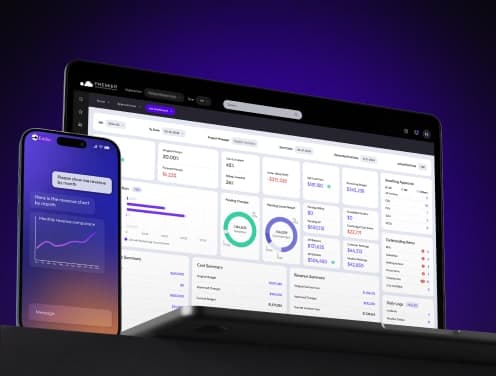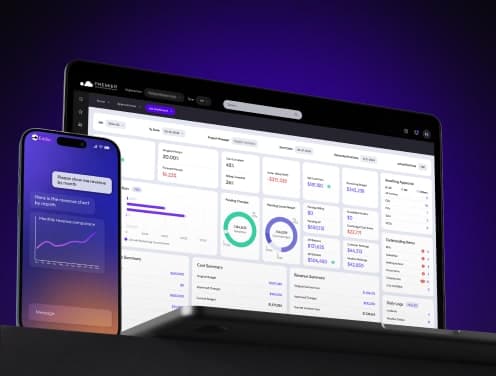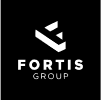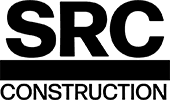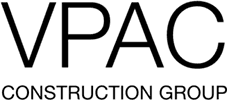
The Complete Guide to Construction Budget Management in 2025
70% of construction project budgets go to hard costs, and the remaining 30% covers soft costs.
These figures show how construction companies need to balance their project finances carefully. Project success depends on strategic planning, not just expense tracking.
Construction companies save thousands of dollars on each project by using sophisticated budgeting tools that track expenses accurately. The budget should have contingency funds between 3% to 10% to handle unexpected costs.
Teams can track their expenses live with construction financial management platforms like Premier Construction Software. These platforms turn raw data into practical insights that lead to better decisions.
This piece shows you the newest ways to manage construction budgets - from core components to risk reduction strategies. Modern tools and techniques help construction companies keep their project finances under control.
Digital Tools Transforming Construction Budget Management
Modern construction financial management software has changed how companies manage their budgets. Digital solutions give precise control over project finances through automated systems and live updates.
Construction Financial Management Software Solutions
Premier Construction Software shows how far construction financial management has come. Their platform simplifies budget tracking with automated processes that cut down manual data entry. The software links field operations directly to accounting systems and creates a unified financial ecosystem.
Key features of modern construction financial management software include:
● Automated cost tracking and allocation
● Integrated payroll and expense management
● Live financial health indicators
● Customizable budget structures
● Multi-project portfolio management
Real-time Budget Tracking Technologies
Live tracking technologies have brought unmatched accuracy to construction budget management. Companies can now monitor expenses as they happen, and project's financial status updates instantly. Field teams can record production tracking, time tracking, and material usage right from their mobile applications.
Construction firms that use live budget tracking see better cost control results and significant improvements in cost control. Project managers can spot budget variances instantly and fix financial problems before they grow.
Data Analytics and Reporting Platforms
Advanced analytics platforms turn raw financial data into applicable information. These systems take information from multiple sources and create detailed financial reports and forecasts.
Construction companies can now:
- Generate automated job cost reports
- Create accurate financial forecasts
- Track project performance metrics
- Analyze historical cost data
- Monitor risk indicators
Artificial intelligence in these platforms helps predict potential cost overruns and suggests fixes. The customizable dashboards let stakeholders see project finances in real time and make better decisions faster.
Modern reporting systems come with flexible work breakdown structures that fit specific project needs. Construction firms can organize and analyze financial data at different detail levels, from individual cost codes to overall project performance.
Key Components of Modern Construction Budgeting
Construction budget management success depends on knowing its basic building blocks. Companies in construction split their budgets into clear categories to keep tight control of their money.
Direct vs Indirect Cost Analysis
Construction projects usually allocate 70% of their budget to direct costs and 30% to indirect costs. Direct costs include:
● Materials and equipment purchases
● Labor wages and subcontractor fees
● Project-specific equipment rentals
● On-site utilities
● Project supervision costs
Indirect costs keep the overall operations running. These costs cover office rent, administrative salaries, software licenses, and corporate insurance premiums. Premier Construction Software helps companies track both types of costs through automated systems.
Resource Allocation Systems
Resource allocation systems make it easier to distribute labor, materials, and equipment in projects of all sizes. These systems help construction firms:
- Track materials usage and cut waste
- Make labor coordination better
- Schedule equipment at the right time
- Keep an eye on resource usage rates
Construction teams can adjust their resource distribution based on up-to-the-minute project needs. This flexibility prevents bottlenecks and cuts down on idle time for workers and machinery.
Digital Cost Code Structures
Digital cost codes are the foundations of modern construction budgeting. These standard identifiers help companies sort and analyze expenses quickly. Construction companies use these codes to split expenses into specific categories that give them a better view of project finances.
Cost codes create a standard system to monitor financial performance in projects of all sizes. They connect project management with financial management during budgeting, bidding, and contract development.
These codes also enable precise tracking of labor hours and expenses. Field teams provide detailed time card data that improves project cost assessment accuracy. Project managers use this detailed data to create more accurate bids for future projects.
Construction firms using digital cost codes see major improvements in time tracking and cost control. The system lets teams share financial data with stakeholders right away, which eliminates delays from old paper-based methods.
Data-Driven Budget Forecasting
Predictive analytics has transformed the way construction firms forecast their budgets. Recent studies show AI-powered cost estimation models can achieve accuracy rates between 91% and 97%.
Predictive Analytics in Construction
Construction companies use advanced analytics to identify potential project issues and prevent cost overruns. Premier’s construction management software's integrated predictive analytics help companies detect budget risks early through automated systems.
Machine learning algorithms analyze these key variables that affect project costs:
● Material price fluctuations
● Labor availability
● Equipment utilization rates
● Weather patterns
● Market conditions
Machine Learning for Cost Estimation
AI-powered systems deliver remarkable results for different types of projects. Bridge construction projects that use support vector machines have achieved 98% accuracy in cost estimates. Neural networks have shown 93.19% accuracy when predicting highway project costs.
Machine learning implementation has cut estimation time by about 80%. Construction teams can now:
- Generate multiple cost scenarios quickly
- Analyze more project variables
- Respond faster to market changes
- Create detailed risk assessments
Historical Data Analysis Methods
Historical data forms the foundation of accurate construction budget forecasting. Past project outcomes help create reliable measures for future estimates. Construction firms now use regression analysis to find connections between project variables and costs.
Premier Construction Software helps companies track detailed records of past projects, including labor productivity rates and material costs. This historical information provides a great way to get accurate future estimates.
Modern analysis methods combine multiple data sources, unlike traditional approaches:
● Internal financial records
● Project completion reports
● Subcontractor performance data
● Market trend analysis
● Equipment utilization logs
Historical analysis combined with machine learning produces better estimation accuracy. Neural networks perform better than traditional regression models for urban renewal projects. This improvement lets construction firms submit competitive bids while maintaining profit margins.
Construction Budget Performance Metrics
Financial metrics are the foundations of successful construction budget management. Premier’s construction financial management software helps companies track these vital indicators with its integrated dashboards and reporting tools.
Essential KPIs for Budget Tracking
Construction companies watch several key performance indicators to stay financially healthy. The cost performance index shows if projects stay on budget by comparing budgeted costs against actual expenses.
Critical budget tracking metrics include:
● Working capital ratio (current assets minus current liabilities)
● Return on assets (net income divided by total assets)
● Cost variance percentage
● Accounts receivable aging
● Quick ratio for short-term liability coverage
Automated Performance Dashboards
Construction project dashboards have reshaped how teams monitor financial data. These platforms display live visualization of critical metrics instead of manual reports.
Five key advantages of automated dashboards:
- Better team collaboration through shared access
- Quick spotting of budget risks
- Automated financial report generation
- Customizable views for different stakeholders
- Better decision-making capabilities
Real-time Financial Health Indicators
Live tracking helps construction firms spot financial issues early. The quick ratio reveals a company's ability to pay short-term obligations. Companies also watch accounts receivable turnover to see how quickly they collect payments.
Construction firms monitor cost variance to measure the gap between planned and actual expenses. A positive variance means project costs are under budget, but this needs careful analysis of contributing factors.
Working capital is a vital indicator of short-term financial stability. Companies with higher working capital show better financial health. All the same, some contractors might have excess working capital, which suggests room for business growth.
Premier Construction Software combines these metrics into customizable dashboards. Project managers get instant alerts about budget variances and can respond quickly to potential issues. The system tracks labor productivity rates and compares budgeted hours against actual time spent.
Teams now access financial data instantly instead of waiting for monthly reports. This immediate visibility prevents cost overruns through early detection and quick action. Project managers can make smart decisions about resource allocation and budget adjustments.
Automated systems make tracking many metrics simple and straightforward. These platforms create clear visualizations that show trends and potential issues, especially in areas that affect project profitability.
Risk Management Through Technology
Technology is the life-blood of effective construction budget risk management. Modern software solutions help construction firms predict and minimize potential losses through strategic data analysis.
Automated Risk Detection Systems
AI-powered systems have become essential for construction companies to identify potential budget risks early. These systems analyze historical project data to detect patterns that might indicate future problems. Premier Construction Software's automated detection capabilities let construction teams spot budget anomalies right away.
Modern risk detection systems bring several advantages:
● Up-to-the-minute monitoring of project expenses
● Automated alerts for budget deviations
● Pattern recognition for risk prediction
● Integration with existing financial systems
● Continuous improvement through machine learning
Digital Contingency Planning
Digital contingency planning has changed how construction firms prepare for unexpected events. Companies usually set aside 3-10% of their total budget as contingency reserves. Premier Construction Software helps teams manage these reserves through automated tracking systems.
Five steps to implement digital contingency planning:
- Risk assessment through data analysis
- Reserve allocation based on project type
- Automated monitoring of contingency usage
- Up-to-the-minute updates on reserve levels
- Adjustment of plans based on project progress
Construction firms now combine parametric methods with historical data to estimate contingency needs. This approach leads to more accurate predictions by factoring in past project experiences with current market conditions.
Budget Variance Analysis Tools
Budget variance analysis tools have changed how construction companies track financial performance. These systems compare actual costs against estimates and give quick insights into project health.
Modern variance analysis tools keep track of several key areas:
● Project task costs versus estimates
● Resource utilization rates
● Equipment and material expenses
● Labor cost variations
● Overhead allocation accuracy
Premier Construction Software's variance analysis capabilities help teams spot cost overruns quickly. The system flags areas where actual costs exceed budgeted amounts automatically.
Teams need accurate data collection for successful variance analysis. Construction firms using automated systems report higher accuracy in cost tracking. Up-to-the-minute monitoring lets project managers fix issues before they become major problems.
Digital tools have also improved teams' handling of supply chain disruptions. Construction companies now track material price fluctuations and adjust budgets as needed. Project managers get instant notifications about potential cost impacts.
IoT sensors and mobile devices have boosted site monitoring capabilities. These technologies send live data to project management systems and create a full picture of project finances. Construction firms report major improvements in budget control and risk mitigation since adding these tools.
Machine learning algorithms analyze big amounts of project data to identify potential risks. Construction teams can anticipate problems and take preventive action. The BERT-based classification model achieves a 93.4% accuracy rate in detecting contractual risks.
Construction companies that use these technologies report better project outcomes through improved risk management. Automated detection, digital planning, and variance analysis create a detailed risk management framework that protects project budgets well.
Conclusion
Digital innovation has revolutionized construction budget management. Premier Construction Software guides this transformation with automated systems that deliver 91-97% accuracy in cost estimations.
Construction companies now make complex financial decisions more precisely. Smart tracking systems detect budget variations immediately. AI-powered analytics help predict risks before they become problems. The automated processes minimize manual data entry and simplify resource allocation for projects of all sizes.
Construction budget management thrives on advanced tools and smart implementation. Companies that use integrated financial platforms see better cost control and project results. These digital tools maintain perfect contingency reserves and offer quick insights into project finances.
Construction firms can now concentrate on project delivery rather than struggle with spreadsheets. Premier Construction Software's complete financial management tools help companies stay competitive in 2025 and beyond. The blend of predictive analytics, automated risk detection, and up-to-the-minute tracking forms the foundation of construction financial excellence.
